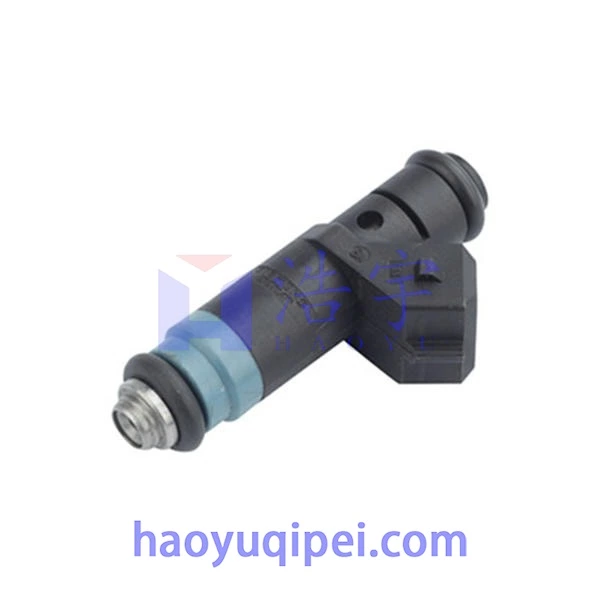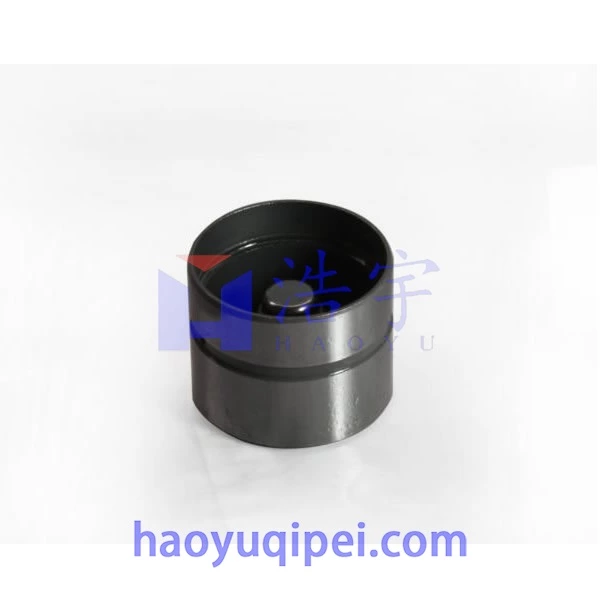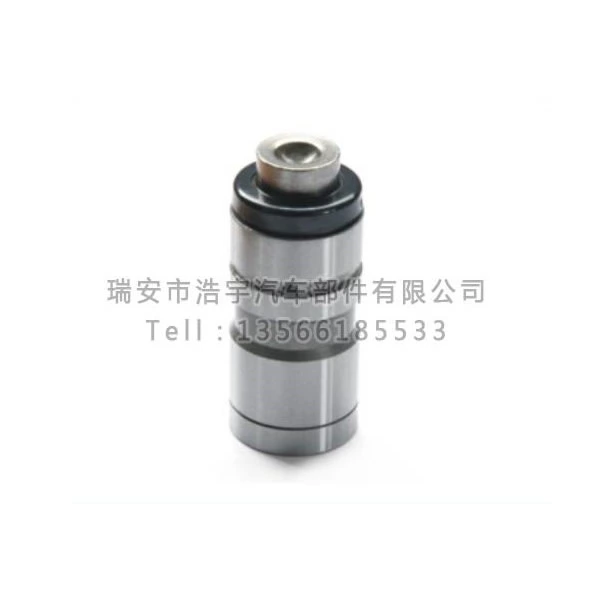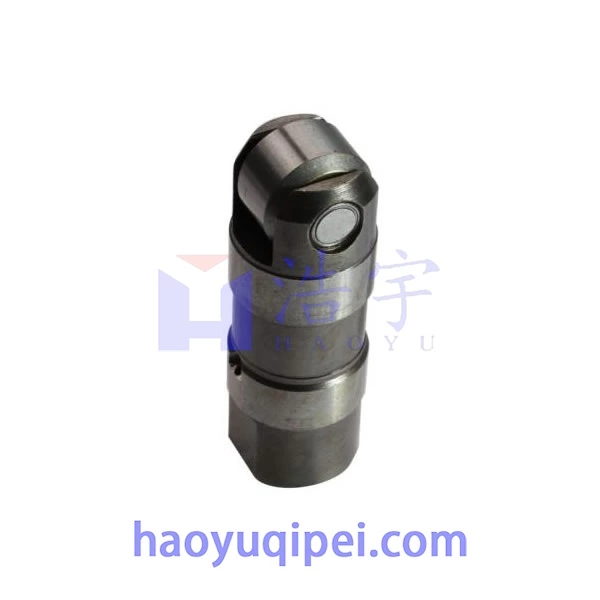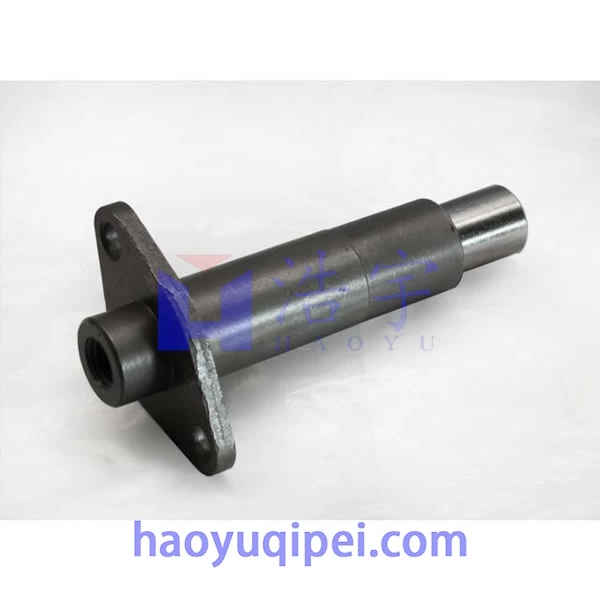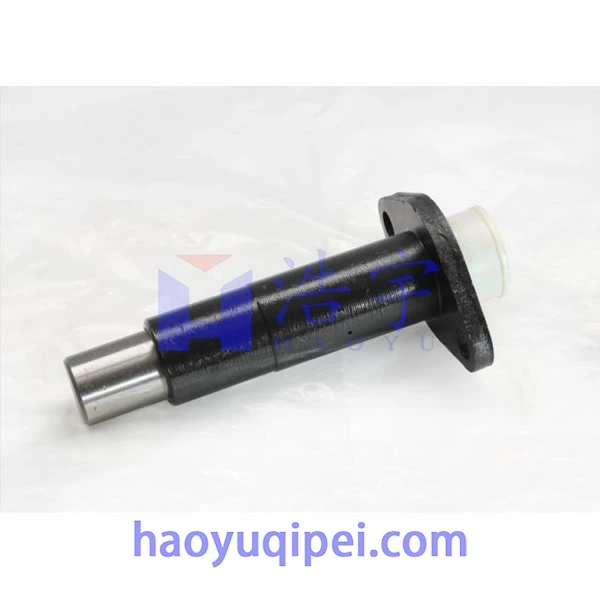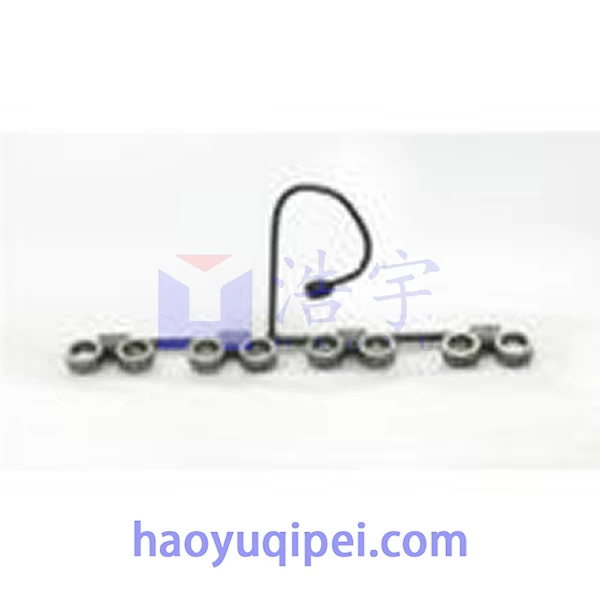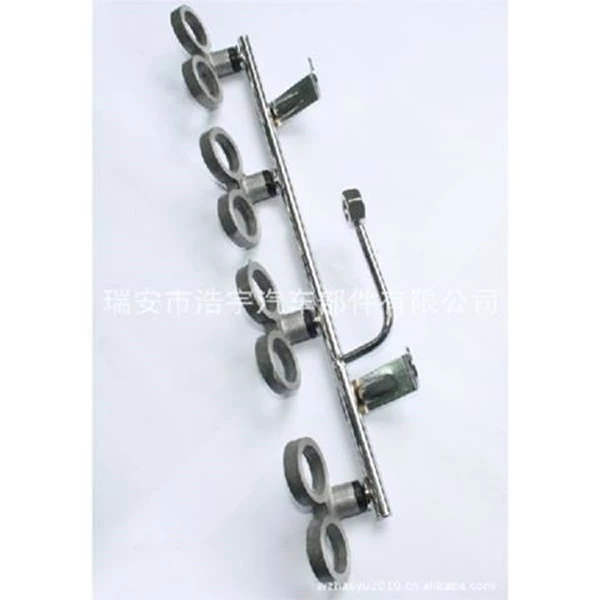Common Faults And Repairs Of Fuel Injection Nozzles
Fuel Injector consists of the injector body, push rod, injector nozzle, pressure regulating spring and other parts. When working, the injection pump injects high-pressure fuel from the injector oil inlet pipe joint through the injector body and the oil channel in the needle valve body into the annular high-pressure oil chamber in the middle of the needle valve body. The oil pressure acts on the pressure-bearing inclined surface in the middle of the needle valve to form an upward axial thrust. When this thrust exceeds the pressure of the pressure regulating spring, the needle valve moves up, and the fuel is sprayed into the combustion chamber in an atomized state through the four spray holes at the bottom of the valve body. When the oil supply is interrupted and the oil flow pressure drops, the needle valve quickly returns to its position under the action of the pressure regulating spring, and the sealing cone surface at the bottom of the needle valve is pressed tightly against the sealing cone surface of the needle valve body and the spray hole is closed, and the fuel stops spraying.
(1) Common faults of injectors and their maintenance methods
The working conditions of the injector are very bad, with high mechanical and thermal loads. In addition, improper installation and adjustment often cause poor spraying, oil dripping from the spray hole, carbon deposition, and even needle valve jamming.
① The injector does not spray fuel. Check whether there is air in the oil circuit, if there is air, remove it in time; whether the oil pump is supplying oil normally; whether the fuel system is leaking oil; whether the injection needle valve is stuck in the needle valve hole, disassemble, inspect, clean and repair if necessary.
② Wear of the sealing cone surface. Generally, the valve body cone angle is 590, while the needle valve cone angle is 600, and the contact surface width is 0.2-0.3mma. If the fuel entering the fuel injector contains particulate mechanical impurities, the conical surface will be worn out with grooves, the contact zone will be widened, and the fuel will leak from the seat surface, causing coking and carbon deposition, difficulty in starting, black smoke, power reduction, and increased fuel consumption. Clean and maintain frequently, and replace parts if necessary. The inspection of needle valve matching is shown in Figure 33
③ Wear of the needle valve guide surface. The clearance between the needle valve body and the valve body is very small, only about 0.002-0.004mm. If dust and mechanical impurities invade the surfaces of the two parts, the geometric accuracy and roughness of the guide surface will be destroyed, and the contact surface will generate very high pressure and instantaneous high temperature, causing the surface to be adhesively worn and stuck. In this case, new parts should be replaced.
④ Wear of the shaft needle and the spray hole. The fuel is flushed at a higher pressure and speed, which is the main cause of the wear of the needle valve shaft needle and the valve body spray hole. At the same time, the nozzle part of the shaft needle extends into the combustion chamber and contacts the combustion gas, making the surface brittle, resulting in peeling or comb-like grooves, the shaft needle head changes from the original cylindrical shape to a conical shape, and the spray hole diameter is also worn and increased, losing the positive ring shape, all of which lead to a decrease in injection pressure, deterioration of spray quality and shortened injection time, and should be replaced and repaired.
⑤ Insufficient elasticity of the pressure regulating spring. The injection pressure of the injector is too low, the fuel atomization is poor and cannot be adjusted, and even the compressed gas in the cylinder pushes open the injector needle valve and returns to the high-pressure oil pump through the oil return pipe, resulting in no oil pumping and the diesel engine stalling. For this, the pressure regulating spring should be updated. If there is no new pressure regulating spring to replace, a small washer of appropriate thickness can be added between the original pressure regulating spring and the pressure regulating spring seat to increase the preload of the spring to solve the problem of insufficient elasticity.
(2) Inspection and adjustment of the injector
① Abnormal operation of the injector usually leads to poor operation of the injector parts. Therefore, in addition to checking the use of other parts of the injector one by one, the injector parts should be inspected and repaired. The matching surface of the injector parts and the end face of the needle valve should be bright in color, without damage or rust. The sealing cone surface of the needle valve and the needle valve body should be bright, without pitting or scratches.
②The needle valve and the needle valve body are made by grinding and processing in pairs and cannot be interchanged. Therefore, they cannot be mixed when cleaning, and they must be cleaned separately in pairs; when the needle valve is stuck in the needle valve body, it should be replaced.
③The carbon deposits on the needle valve and the needle valve body can only be removed with special tools, but special care should be taken not to damage the mating surface.
④The fuel injector is installed on the tester, and the oil is pressed evenly and slowly with the handle, and the adjusting screw is screwed in at the same time until the fuel injector sprays oil at the specified pressure. Stop pressing the oil and observe whether the pressure gauge pointer drops (and there is no dripping phenomenon); the difference in injection pressure of each fuel injector of the same engine shall not exceed the specified value. If the pressure does not meet the requirements, the pressure regulating spring screw can be turned to adjust it to the specified value.
⑤Inspection of spray quality: The fuel injector should generally have 4 sprays, each spray length is about 150-200mm, and the fuel spray cone sprayed by the fuel injector should not be skewed, and its cone should meet the original factory regulations. When the oil is pressed slowly with the handle, the oil mist sprayed from the nozzle should be fine, and the oil particles in the mist beam of each oil hole should be evenly distributed and of the same length. There should be no visible oil mist splashing, oil particle columns or oil dripping; the fuel cut-off should be timely and there should be a crisp sound. If the spray quality is not good, the nozzle parts should be replaced. ⑥ Inspection of the fault of the fuel injector on the engine: Once the fuel injector fails, the running engine will produce black smoke from the exhaust, uneven operation of each cylinder, increased vibration, power reduction and other abnormal phenomena. The faulty fuel injector can be found out by the cylinder cut-off method in turn. The method is: the engine is running at idle speed, and the fuel injection of each cylinder is stopped in turn. When a cylinder stops supplying oil, if the exhaust no longer emits black smoke and the engine speed does not change significantly, the fuel injector is faulty; if the engine speed drops significantly, the working condition becomes worse instead, and the fuel injector of the cylinder is working normally.
